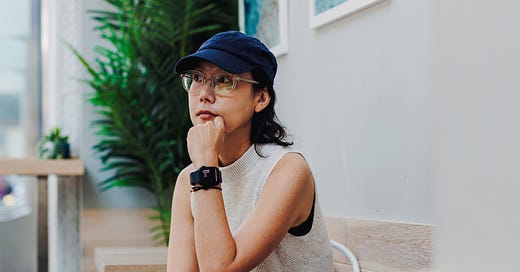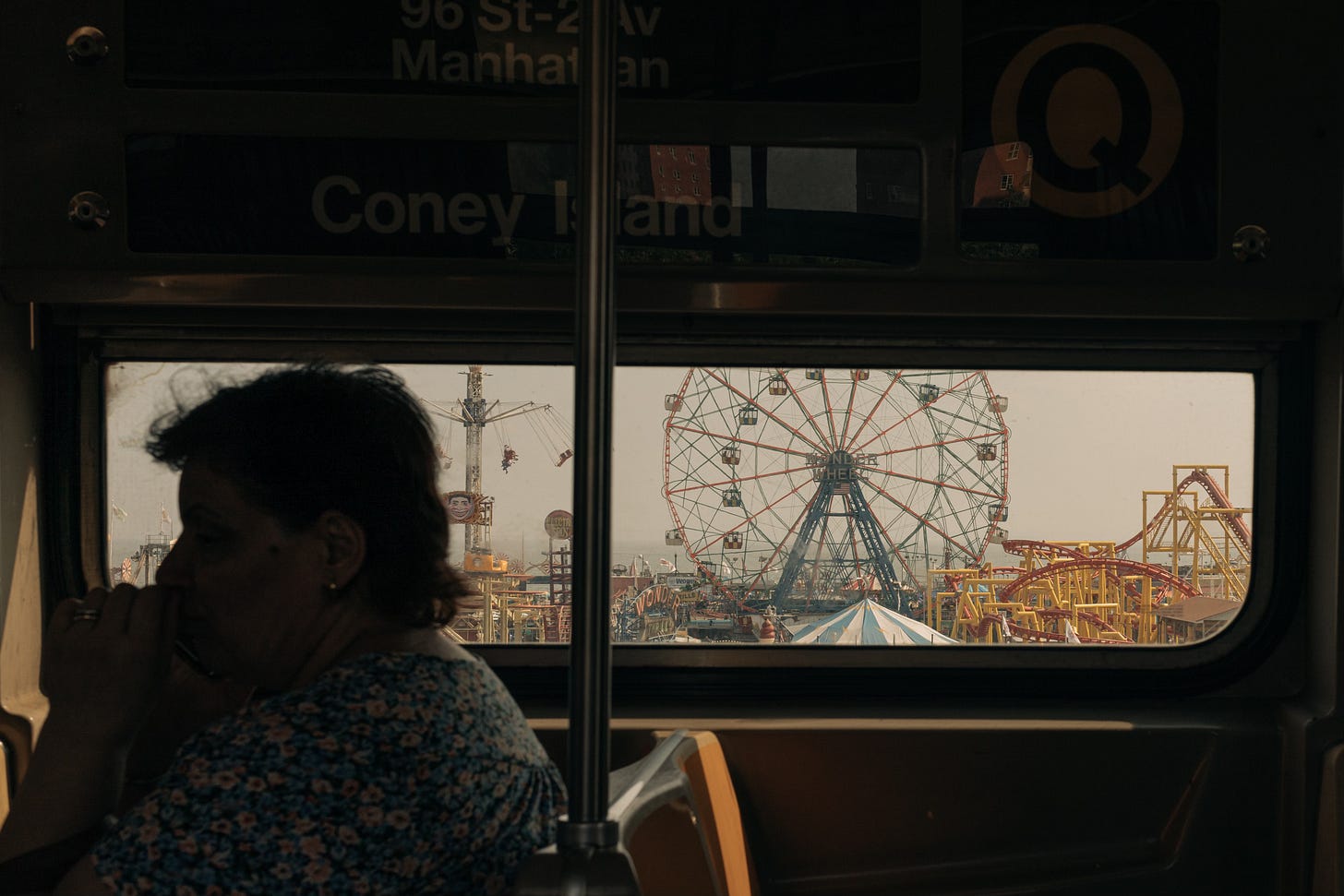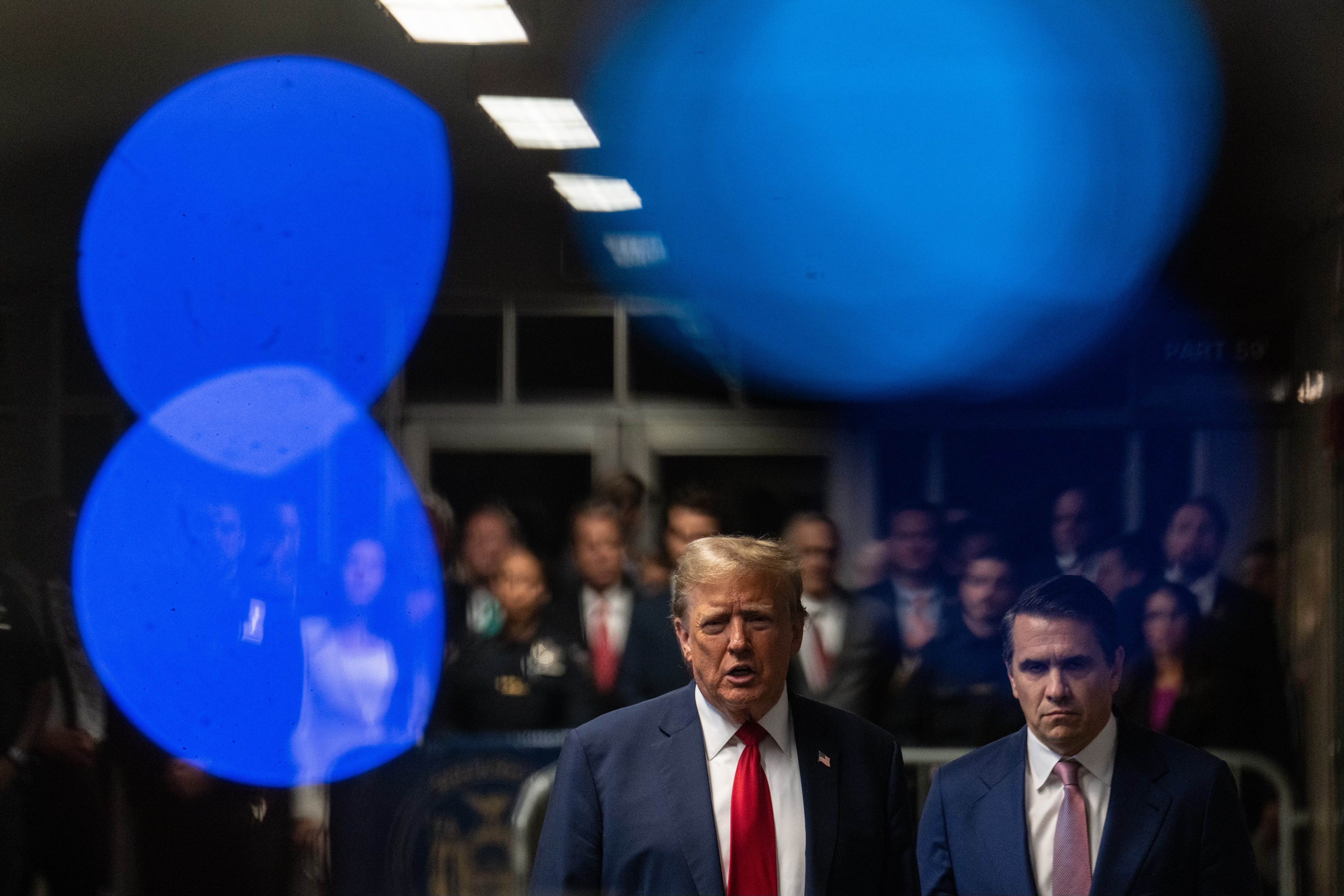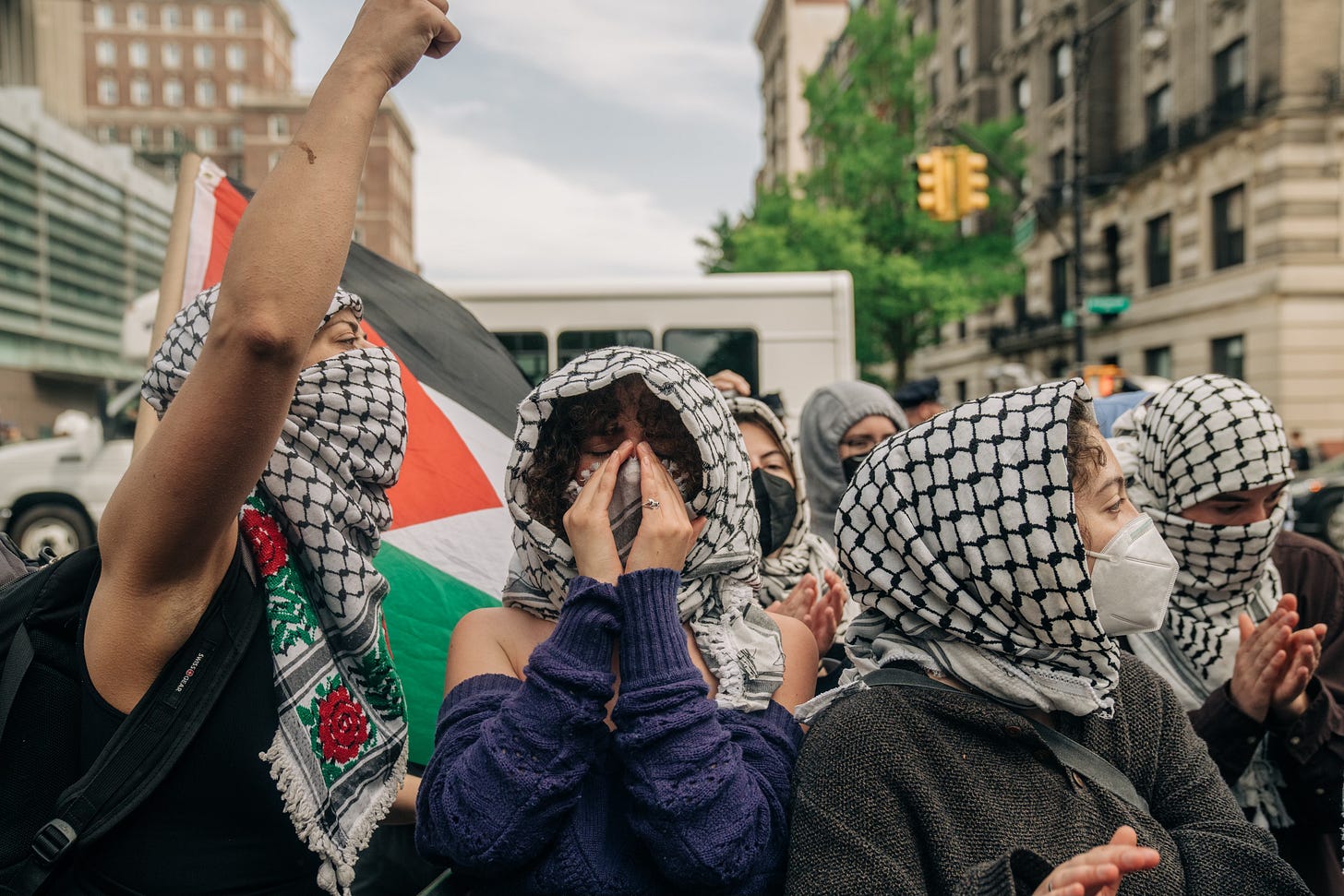How Photographer Jeenah Moon Makes Capturing History an Everyday Event
The breaking news photographer discusses her journey to photography, her process, covering world changing moments like the conviction of former President Donald Trump, and more.
Photo journalism is more than just taking a photo. It is the practice of visually reporting the moments that become history. It requires diving into a situation headfirst, understanding the events that shape our world—big and small—and translating its feeling and nuance into a still image for the world to see.
It’s through photo journalism that we understood the severity of the insurrection on January 6, 2021. It gave us access to the experience of 15 year old Elizabeth Eckford as she walked into the newly desegregated Little Rock Central High School surrounded by a crowd of screaming white protesters.. Photo journalism made tangible the impact of former President Obama’s historic presidency when he bowed in the oval office to let 5 year old Jacob Philadelphia touch his head, in a Pete Souza photo titled “Hair Like Mine.”
But for photographer Jeenah Moon, capturing history is an everyday practice. The South Korean-born photo journalist spends her days in New York City, documenting the moments that become world changing, freelancing New York Times, Bloomberg, Reuters, NBC News, the Washington Post, and more along with newswire agencies like Getty Images and Reuters.
It wasn’t always a given that Moon would become one of New York’s go-to photo journalists. She initially studied Art History, Criticism and Conservation at Baylor University in Texas, and was planning to continue her education in graduate program in Europe. But a snap decision led her to making her own photography.
The choice was a springboard. Moon would go on to win a Front Page Award for Best Photography Essay for “The Watchman of New York" in 2015, the Reuters Mentorship Award at the Eddie Adams Workshop in 2016, Photo District News’ 30 New and Emerging Photographers to Watch in 2017. In 2024 alone, she has covered breaking news such as the Columbia University student protest over the War in Gaza, Donald Trump’s hush money fraud trial, the migrant crisis in New York, and many more.
Moon and I caught up at a coffeeshop in midtown Manhattan in June to discuss her path to photography and her storied career.
*The following conversation has been edited and condensed for clarity.
What initially peaked your interest into photography?
When I was 11, I took a black and white film class. My teacher showed us the work of [war photographer] James Nachtwey, and I liked his black and white approach for his news coverage.
Later, I studied Art History, Criticism and Conservation at Baylor University in Texas, and I was planning to go to Europe for my master’s degree. But before I went to Europe, I decided to study a little bit of photography. [In my degree], I was looking at artwork that was already made, but I wanted to make art for myself. I discovered the International Center of Photography in New York, and in 2013, I moved to New York to study in a one year journalism program. After I graduated, I began freelancing for the New York Daily News and other small newspapers. Then In 2016, I got accepted into the Eddie Adams Workshop and received the Reuters Mentorship Award. Through that, I met editors, and that’s how I started working for Reuters, Bloomberg, the New York Times, and other publications.
It sounds like the Eddie Adams workshop was this big launch pad for you. As a photographer and as an artist, how did you grow from that? What did you take from that?
So the sad thing is when I went to ICP, I didn’t know much about photography so it was a lot of struggle for me to figure out my own vision. When I saw something, I couldn’t photograph it how I wanted. It was a really tough time. But at the Eddie Adams workshop, I saw all of these great photographers. There were people I had already known, people who had published work with big publications. We talked to them and they shared their work and portfolio. It helped to open my eyes at how there are other ways to tell stories.
You talked about how you had your vision but you couldn’t quite execute it early on, which I find so interesting because now, a decade later, I can always tell what is a Jeenah Moon photo. What do you look for when you’re on these breaking news assignments?
Now, everybody can take a photo [with their phone] so being creative, I want to see something deeper. I’m looking for the details. It can take some time to figure out those details once you’re in the situation.
I also work for the wires where the news coverage is very straightforward. So I’ll photograph the same event in a wire style, and then I also try to do something more impactful [in my style.]
Those details take time to find and capture, but you’re in breaking news which requires quickness. So how do you juggle that creativity with speed?
It could be from my training. Once you’ve shot a lot, your body knows “oh that’s the thing.” I do a lot of news coverage so I can see what photo will be the cover shot. When I’m shooting news coverage, I’m also thinking about the mood, the atmosphere of the place. You can smell it. It colors the whole situation. You have to capture the “smell’ space. Its layers.
You bring your voice to capture historic, world-shifting moments. For instance, you recently captured Donald Trump’s criminal hush-money fraud trial. Firstly, just in terms of timing, how long was it?
It was 6 weeks.
Were you there every day?
I was there 2 times a week for 6 weeks. The court officers told us to be there by 7:30 because of traffic and security for court at 9am. Then court would finish around 5pm so it was almost 10 hour days. But it was better than the civil trial. For the civil trial, anyone could go, first come, first serve. And there could be a huge line depending on who the witness that was coming. This time, for the criminal trial, it was organized, and it was assigned who would be the photographer each time.
With this criminal trial, It’s a historic moment, but also at the end of the day, it’s just a courtroom of people sitting in chairs talking for six weeks. Even though it was a long assignment, how did you keep the imagery fresh for you?
Since I’ve been photographing for a long time, I know what kind of photo I need. And even though everybody is photographing the same thing, that doesn’t mean I have to file the same images. What if I give the wires a different type of photo? If I’m shooting something straightforward, maybe the next time, I do a different angle or use a flash or do something more creative. It helps the editor or the reader to have different options or mood for whatever moments may come up.
But it was also very intense. The court usually started at 9am, but Trump would arrive earlier to speak to the members of the media. In the hallway, there were about 5 photographers, 2 camera guys, and a couple of pool reporters. He’d speak for 5 or 10 minutes, and when he finished speaking, he’d go into the courtroom. We’d wait a couple of minutes and then a court officer would escort 5 photographers to go into the courtroom. Then we’d only have 55 seconds to photograph inside. They would count those 55 seconds.
How do you balance that pressure?
That’s the most intense time. I don’t really talk. I try to get a shot that I want, but you have to shoot from [where you are placed.] You have to be patient but you also can’t wait and take your time. It’s very crazy.
And if you only have those 55 seconds to photograph in the courtroom in the morning, what do you do for the rest of the day?
There would be 20 minute breaks or lunch breaks. You’d never know if he’d speak when he’d come out. Or even if he was just walking in or walking out, you’d still need to get the photo.
Or sometimes [a new witness] or maybe somebody famous like a CNN anchor would walk down the hallway. You never know what kind of news occur so we’d just have to photograph what we thought was interesting throughout the day [from the hallway].
Not only are there so many photographers who have photographed him, on any given assignment, there are also so many photographers who are standing literally next to you getting the same shot. In those moments, do you think about those other photographers and how do you think about making your photos standout?
We’re competitive but also at the same time, we’re colleagues. We’re friendly. We’re not fighting. We respect each other. Like, the Trump trial, it was very peaceful. It was a small group and we’ve worked together for years. We’re really diplomatic with each other. They’re really top-grade photographers here. And then, some people from D.C. will show up. Like [New York Times photographer] Doug Mills. “Oh my god, he’s here. I’m going to learn so much from him.” It’s good to see a great photographer next to me and then see what they shoot. People say it is a competitive job because there are so many photographers, but you trust your work and your ability.
Let’s go beyond the Trump trial. You cannot look at history and not see your photos. I remember when I was photo editing at NBC News, I’d look through the wires to cover the news, and I’d always see your work. You were doing such good work and such distinct work. You’re present at so many of these big moments, and since it’s breaking news, you never know what you’re going to get. How do you stay grounded and focused?
I think it’s based on my experience. I’ve been doing this for almost 8 years. Sometimes, I’ve lost some moments. It happens because my body is right there but the crowd is everywhere. But you have a sense of [the bigger picture] that is happening. If I get a sense that something may happen, I try to stick around and then if it’s nothing, then I’ll move around.
It sounds like it is really trusting your experience and instincts.
Yeah, it’s all about your instincts. And you have to navigate with street smarts too. While you’re photographing, you have to keep an ear on what people are saying, if people are gesturing, etc.
From your career, do you any instances that stick with you, whether that is a photo that you’ve taken or a powerful moment you experienced?
So, during [Christmas in the pandemic], I was on a Reuters assignment. There was a holiday performance outside of a church, and I was photographing. After the performance ended, we were all trying to leave, and all of a sudden, we heard gunshots.
[On December 13, 2020, a gunman opened fire following an outdoor Christmas caroling event at the Cathedral of St. John the Divine in Morningside Heights. Officers returned fire and the gunman was shot. He later died from his wounds in the hospital]
I wasn’t right behind a cop, and I was a little bit outside of the shooter’s line of sight so I was lucky I could move around, but still, I had to be careful. I knew I had to photograph him shooting and people hiding, but I also could have been injured. Then, afterwards when they took him to the ambulance, I assumed he was dead, and I had never seen a dead body or someone bleeding like that before.
It was a very dangerous situation. But I am glad that I was able to safely capture that moment of news for others to see. It was really big breaking news.
Why does photo journalism matter to you enough to put yourself in those positions? For you, what makes the job worth it?
Even though it can be really dangerous at certain moments, in general, it’s a really fun job. I’ve always liked reading the news so I’m always excited when I’m in these historic moments. I could be photographing one thing today, and then tomorrow, it could become history. It’s really meaningful. One day, I’ll be able to tell my grandchildren when they read a text book, I’ll be able to say, “yeah, I was there!”







